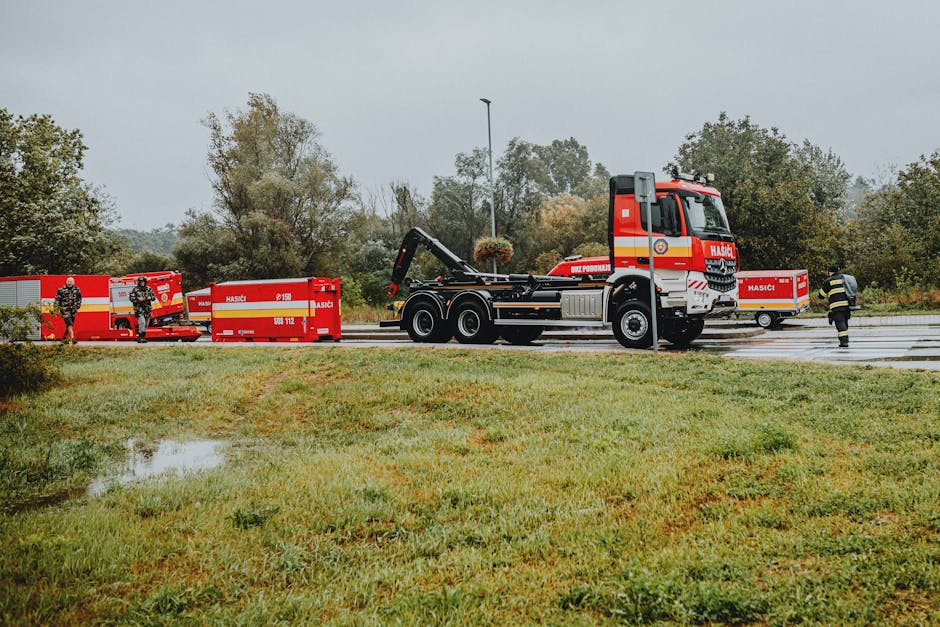TLDR
You can improve dispatch speed, asset accuracy, and compliance across your fire protection companies in Massachusetts by implementing real-time asset mapping, using automated filters, and integrating wildfire data layers—boosting response times and reducing errors.
Overview of Current Dispatch & Asset Gaps
Pressure is mounting throughout Massachusetts fire protection—dispatch must be seamless, and asset inventories up-to-date. After testing platforms from FirstDue to GSA-acquired RMS tools, local firms are ready to close gaps between call-out and equipment status, preventing costly lags and confusion.
Common Headaches in Dispatch & Asset Mapping
Operators face more than slow queues:
- Outdated IDs: In 2019, one Worcester mid-size operator’s asset sync mapped to retired IDs, stalling urgent jobs.
- Webhook Typos: Payload key errors interrupted GIS uploads from the National Interagency Fire Center.
- Inspection Mismatches: Jobs loaded under non-urgent codes (5.3.2.1) instead of quarterly critical (5.2.2.1), sending teams to wrong sites.

Technical Solutions & Custom Filters
- DFS/NFPA-Aligned Filters: Auto-classify jobs by inspection type and required frequency using incident metadata.
- Idempotent Webhooks: Employ idempotency keys (e.g., HubSpot’s
contact.sync.timestamp) and sequence checks to flag typos before GIS ingestion. - Atomic Database Sync: Nightly SQL Server
MERGEstatements reconcile “active vs. retired” IDs and highlight orphan records. - GeoJSON Overlays: Real-time MassWildfire layers let crews pre-prioritize jobs near high-risk wildland/urban interfaces.
Deep Dive: SQL MERGE Logic
MERGE INTO Assets AS target
USING Staging AS source
ON target.AssetID = source.AssetID
WHEN MATCHED AND source.Status = 'active'
THEN UPDATE SET target.Status = 'active'
WHEN NOT MATCHED BY TARGET
THEN INSERT (AssetID, Status) VALUES (source.AssetID, source.Status)
WHEN NOT MATCHED BY SOURCE AND target.Status = 'retired'
THEN DELETE;
This atomic pass prevents orphaned records and keeps dispatch feeds accurate.
Industry Benchmarks & Case Studies
| Partner | Improvement | Notes |
|---|---|---|
| FirstDue (New England) | –30% avg response time | Single-pane RMS, late 2022 rollout |
| Boston Contractor | –18% hardware cost | GSA MAS tablets compliant with FAR 8.4 |
| Vol. Fire Companies | +24% staging accuracy | NIFC & MassWildfire data feeds |
| Worcester Operator | –100% sync failures | Fixed retired ID mapping in 2019 |
| Consider searching for “RMS integration benchmarks,” “GIS dispatch ROI,” and “NFPA 25 asset sync.” | ||
“Linking authoritative wildfire layers to dispatch improves resource staging accuracy.” – NIFC OpenData
Actionable Next Steps
- Audit jobs against active, DFS/NFPA-compliant equipment registries.
- Build & test custom filter rulesets in sandbox environments.
- Align all payloads with DHS DAAT schemas; enforce idempotency keys.
- Leverage GSA MAS for compliant hardware rollouts.
- Overlay MassWildfire GeoJSON before your next call.
Glossary of Key Terms
- DFS
- MA Department of Fire Services
- NFPA 25
- National code for fire sprinkler inspection requirements
- GSA MAS
- Federal acquisition schedule for commercial products
- Idempotency Key
- Unique identifier preventing duplicate or erroneous data events
- MERGE Statement
- SQL tool for synchronizing database records atomically
- MassWildfire GeoJSON
- Live wildfire risk data for Massachusetts crews
fire protection, dispatch optimization, asset management, GIS integration, RMS tools, G Suite Admin, HubSpot CRM, Outlook 365, Massachusetts fire services, wildfire data layers, NFPA codes, asset sync, response time reduction, response efficiency, GSA MAS hardware, CRM data accuracy, fire department technology, emergency response tools, firefighting asset tracking, database synchronization, real-time fire risk data, fire service operational improvements, strategic asset mapping, incident metadata, data integration, cloud-based fire safety solutions, fire department digital transformation, Myers-Briggs ESTJ leadership, Massachusetts fire agencies, firefighting technological solutions, operational compliance, firefighting response enhancement, fire safety data standards, workflow automation, firefighting asset lifecycle management, emergency response analytics, fire safety industry benchmarks, fire protection innovation